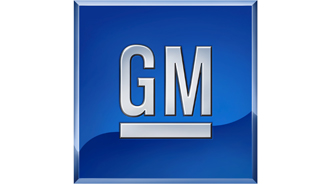ALG Explains GM’s Residual Rise

The rise in residual values for General Motors has been more rapid than the overall industry in recent years, according to ALG.
Projections for 36-month residuals for GM’s 2013 model-year class are still lower than the industry average, but the Detroit automaker has gained a lot more ground in the last four years than the industry as a whole. The question is, why?
ALG examined this in a recent blog post.
Starting with the concrete numbers, the 36-month residual forecast for the 2009 model-year lineup at GM was less than 37 percent, according to a chart in the ALG blog post. Forecasts for the 2013 model-year class are in the general neighborhood of 48 percent.
Meanwhile, for the overall industry, the 36-month residual forecast for 2009 vehicles was a bit less than 43 percent. For the 2013 class, it was around 50 percent.
(ALG noted that GM's numbers also include all phased-out brands. The 2013 numbers for the industry and GM include data from ALG's January-February and March-April editions.)
“GM has managed to increase its residuals more quickly than the industry average through flexible production schedules that better match demand, restrained use of cash incentives and rental fleet sales, and better lifecycle management,” the ALG post reads.
In what started during the mid-2000s, the product development leadership of Bob Lutz fostered a “renewed focus on product execution” that has served the company well, ALG added. And it paid off during the recession.
“During the lean years, GM was able to use its resources more effectively and efficiently than it had previously, allowing the company to emerge from Chapter 11 with a legitimate product pipeline,” ALG noted. “These product advancements had a direct hand in improving GM’s residual positioning against its competition.”
So that the automaker can “reinvigorate the momentum,” it is important that these product upgrades — as well as sales and marketing improvements — continue, and ALG says GM recognizes this.
One area the company’s leadership has highlighted is its strategy on incentives.
“(GM) CFO Chuck Stevens specifically cites ‘incentive discipline’ as important, a message which ALG has consistently touted within the industry,” ALG noted. “GM continues to acknowledge that it needs to continue consistency, choosing a productive course with regards to incentive strategy and sticking to it–even in the face of demand volatility.”
ALG added that GM tackling a good deal of its “low hanging fruit” has brought “positive results” to the automaker. And looking forward, the firm is projecting GM’s residual success will most likely continue.
“With a continued focus on delivering competitive products such as the Cadillac ATS, and a sustained eye on sales discipline, GM’s brands should be able to continue their residual position advancements,” it said.
Residuals for New York Auto Show Launches
Last week, as the New York International Auto Show got under way, ALG’s Eric Lyman offered a bit of commentary on various new models will hold up against time, price-wise. His commentary included a couple GM models, as listed below:
Chevrolet Camaro: “When Camaro was resurrected for 2010, it immediately took the muscle car sales crown away from Mustang. While the Mustang has had a few upgrades since then, Camaro only had minor engine tweaks. This time around Camaro has some new visual cues that will keep it desirable in the used market.”
Chevrolet SS: “The SS is a compelling example of GM’s determination to elevate the Chevrolet brand. If priced right, the SS could be a residual value success given the limited production.”
To read the complete blog entry on GM's residual rebound, visit: https://www.alg.com/how-gm-is-improving-residuals/.
Joe Overby can be reached at joverby@autoremarketing.com. Continue the conversation with Auto Remarketing on both LinkedIn and Twitter. Staff Writer Sarah Rubenoff contributed to this story.

 View The Latest Edition
View The Latest Edition

